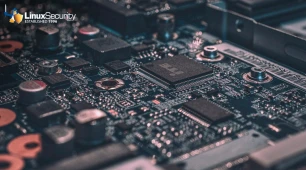
With the release of Linux kernel 6.14, admins and Linux users have many new features and enhancements to look forward to - especially in the realm of security! This version improves defenses against well-known vulnerabilities like Spectre and Meltdown, integrates advanced security modules, and offers robust live patching capabilities. The support for new hardware means you can take advantage of the latest security enhancements built into modern CPUs and devices, making systems faster and more secure.
Beyond these improvements, updates to networking protocols and firewall configurations ensure your network defenses are tighter than ever. Data integrity and confidentiality have reached new heights with filesystem improvements focused on better encryption and secure deletions. As Linux security admins, it is crucial that we familiarize ourselves with these updates, test them in controlled environments, and revise our security policies to leverage these advancements effectively. The 6.14 kernel isn't just an upgrade—it’s a toolkit to future-proof the security of your systems.
Let's examine some of the key updates and advancements you can expect in Linux kernel 6.14 and how they will improve the security of your systems.
Enhanced Security Features
 One of the most significant areas of improvement in Linux kernel 6.14 is its enhanced security features. Kernel developers have continued to refine their mitigations for hardware vulnerabilities such as Spectre and Meltdown. These vulnerabilities, which exploit speculative execution in processors, have been a significant concern in the industry. With each kernel release, security measures become more sophisticated, providing a crucial layer of defense.
One of the most significant areas of improvement in Linux kernel 6.14 is its enhanced security features. Kernel developers have continued to refine their mitigations for hardware vulnerabilities such as Spectre and Meltdown. These vulnerabilities, which exploit speculative execution in processors, have been a significant concern in the industry. With each kernel release, security measures become more sophisticated, providing a crucial layer of defense.
Additionally, Linux 6.14 brings improvements in existing security modules. For instance, systems using AppArmor and SELinux, frameworks designed for enhanced access control, will benefit from more granular control over system access and behavior. These updates allow administrators to fine-tune security policies further, making it even harder for malicious activities to go unnoticed or unchallenged.
Support for Modern Hardware
Another significant advantage is up-to-date hardware support. As new generations of processors and devices come equipped with advanced security features, having a kernel that supports these advancements is vital. The 6.14 kernel’s compatibility with the latest hardware ensures that these built-in security features are utilized, offering enhanced protection mechanisms not available in older hardware.
For instance, new CPUs often come with improved hardware-based isolation techniques and better performance counters, aiding in detecting anomalies and potential intrusions. Embracing these advancements means that not only can you maximize performance, but you also secure your system more effectively against emerging threats.
Filesystem and Storage Improvements
 Filesystem improvements are typically a highlight of new Linux kernel releases, and version 6.14 is no different. File systems like ext4, Btrfs, and XFS have seen enhancements that improve data integrity and security. Improved encryption support makes it harder for unauthorized users to access sensitive data, while features such as secure file deletions ensure that deleted data cannot be quickly recovered.
Filesystem improvements are typically a highlight of new Linux kernel releases, and version 6.14 is no different. File systems like ext4, Btrfs, and XFS have seen enhancements that improve data integrity and security. Improved encryption support makes it harder for unauthorized users to access sensitive data, while features such as secure file deletions ensure that deleted data cannot be quickly recovered.
Btrfs, for example, continues to evolve with better balance operations and more efficient storage utilization, which is crucial for maintaining data consistency and availability. Whether you're managing small-scale deployments or extensive storage solutions, these improvements mean your data is readily accessible to authorized users and protected against unauthorized access or corruption.
Networking Enhancements
Network security is paramount in today's interconnected digital environment, and Linux kernel 6.14 brings several enhancements in this area. The updated network stack supports new cryptographic algorithms, making encrypted communications more robust against decryption attempts. Improved support for VPN protocols means that data transmitted across potentially unsecured networks remains private and secure.
Firewalls have received special attention as well. Integrating with nftables or iptables improves efficiency, making your firewall rules more effective without compromising performance. Enhanced configurations and support for new security options ensure you can better defend against network-level attacks, reducing the attack surface and making it harder for adversaries to exploit vulnerabilities.
Patch Management and Live Kernel Patching
One critical task for any Linux admin is keeping systems patched with the latest security fixes. Linux kernel 6.14 enhances support for live patching, a feature that allows you to apply security patches without rebooting the system. This capability, supported by tools like Kpatch and KGraft, is vital for maintaining uptime and security.
In environments where availability is critical, live patching ensures that security patches are applied promptly, minimizing the window of vulnerability while avoiding the disruptions caused by reboots. This means you can maintain a higher level of security without sacrificing the performance and availability of your services.
Linux Kernel Lockdown Enhancements
 Linux Kernel Lockdown is a feature that restricts certain types of actions even from privileged users, preventing potential inadvertent or deliberate tampering with the core parts of the system. Kernel version 6.14 includes strengthened lockdown modes, providing multiple levels of lockdown that can be tailored to the security needs of your environment.
Linux Kernel Lockdown is a feature that restricts certain types of actions even from privileged users, preventing potential inadvertent or deliberate tampering with the core parts of the system. Kernel version 6.14 includes strengthened lockdown modes, providing multiple levels of lockdown that can be tailored to the security needs of your environment.
These lockdown modes are particularly useful in high-security environments where it’s vital to ensure that even administrative accounts can’t perform actions that might compromise the system’s integrity. By enabling and configuring these enhanced lockdown features, you can create a more secure and resilient system that is better protected against internal and external threats.
Actionable Considerations for Linux Admins
With these advancements, Linux security admins should take a proactive approach to integrating the new features of the 6.14 kernel. Begin by planning for testing and deployment. Carefully test the latest kernel in a staging environment to identify and resolve compatibility issues, especially with third-party software and custom drivers.
Review and update your security policies to take advantage of the new features. If enhanced encryption support is available, ensure it's configured correctly. Revising firewall and network security settings to include new protocol support and cryptographic algorithms can further harden your defense.
Stay informed about new vulnerabilities and patches. A critical part of a security admin’s role is staying abreast of emerging security issues. Regular updates from Linux newsletters and security advisories are vital for maintaining a robust security posture.
Our Final Thoughts on the Linux Kernel 6.14 Release
The release of Linux kernel 6.14 brings enhancements and new features that significantly improve security. From better hardware support to enhanced filesystem and network security, this kernel version ensures we have the tools to protect our systems against current and emerging threats. By thoroughly testing and integrating these updates, staying informed about new patches, and continually refining security policies, we can leverage the full potential of the 6.14 kernel to create a secure, resilient, and future-proof computing environment.


















